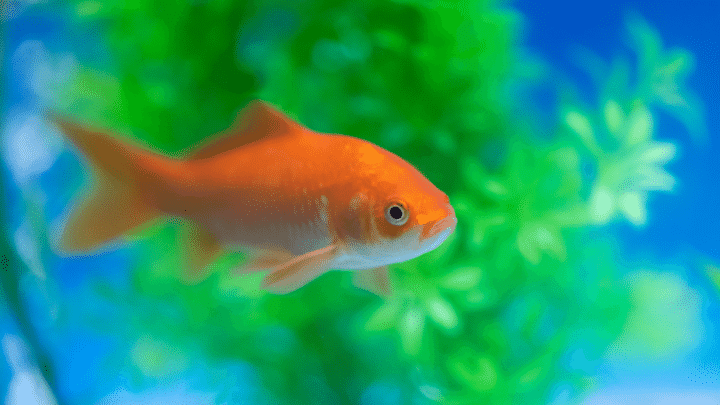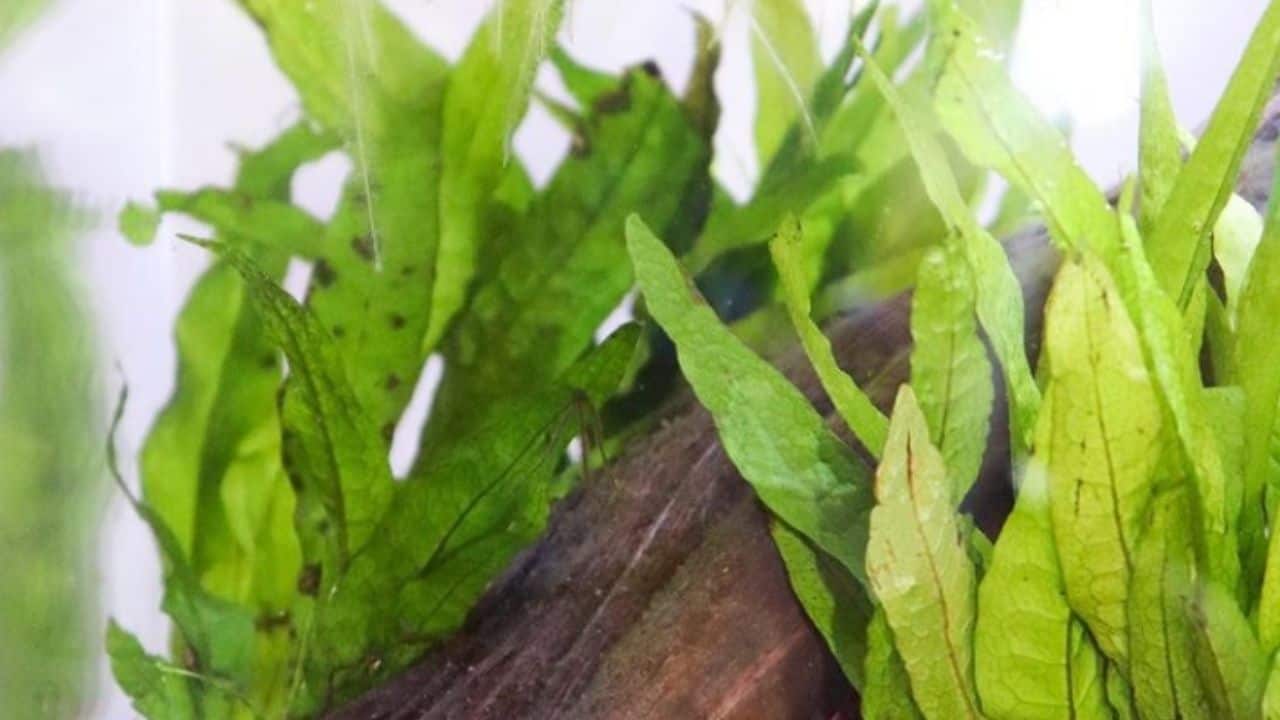One way goldfish owners can try to liven up the aquariums is by planting different types of live and fake plants.
However, goldfish often tend to start eating live plants or tearing them apart, creating a mess in the tank.
You can never completely stop them from damaging aquarium plants as they love to feast on anything green around them.
So, what are the aquarium plants that thrive best with a goldfish inside an aquarium?
What Are the Best Aquarium Plants for Goldfish?
Live aquarium plants that can be used to stop goldfish from wreaking havoc in the aquarium include Water Sprite (Ceratopteris thalictroides), Java Fern (Microsorum pteropus), Anubias (Epipremnum aureum), Pothos, and Water Lettuce.
The Benefits of Some of The Aquarium Plants Used for Goldfishes
Many aquarium plants, especially the bushy ones, can be used in aquarium tanks that have goldfish in them.
However, five plants are most commonly used in the tanks, and each of them has its own benefits:
Water Sprite
The Water Sprite is among the five plants that are most commonly seen in aquariums.
This plant has very simple requirements for caring as it belongs to the Pteridaceae plant family known for their easy-to-grow plants.
Some of the basic plant care requirements include:
- Requirement of light: low to bright
- Rate of Growth: From low to medium
- Temperature requirements: Between 68 and 82 degrees Fahrenheit (20-27 degrees Celsius)
- Requirements of pH: Between 6 and 7.5
- Hardness requirements: Between 3-8 KH
- Aquarium placement: in the middle or at the back
- Tank size: Around 10 (in gallons)
Its benefits include:
- It is undemanding
- It can survive in low temperatures of 68° Fahrenheit (20° Celsius)
- It is capable of growing really fast
- If goldfish nibble on it from time to time, it will not kill the plant.
The Water Sprite is also known by many names such as:
- Water Fern
- Indian Fern
- Ceratopteris thalictroides
It would help if you tried providing your Water Sprite with bright light. If fluorescent lights are being used, they should be three to five watts per gallon of water.
Similarly, if you are making use of LED lights, make sure you use fifty micromoles.
Moreover, while providing high levels of lighting, you can also fertilize your Water Sprite plant often.
The species can be placed floating on top of the tank or planted within your tank.
Java Fern
Java Fern plant, another aquarium plant you can use for your tank, also has basic requirements for care such as:
- Requirement of light: little to medium
- Rate of growth: little to medium
- How much temperature does it need: Between 68 and 82 degrees Fahrenheit (20 to 27 degrees Celsius)
- Requirements of pH: Between 6 and 7.5
- Hardness level: Between 60 and 160 ppm
- Aquarium placement: in the middle or the back of the tank
- The size of the tank: 5 water gallons
This plant is another common variety most often found in aquarium tanks kept at home, and its benefits include:
- It does not have severe parameters for water
- A popular choice amongst aquarium hobbyists, meaning it is a reliable plant
- It can be kept in temperatures as low as 68° Fahrenheit (20° Celsius).
- It is a cheap plant to purchase
- Can survive attacks by goldfish
- It only requires moderate lighting
When you are using fluorescent lighting, the lighting should remain around 1.5 or 2, as measured by the gallon.
While using LED lights, you should use fifteen to fifty micromoles of light.
Java Fern doesn’t require much fertilizer, unlike the Water Sprite plant. However, if you want it to grow well, fertilize it occasionally.
Also, take a look at some of the tips you can follow when you suddenly find your Java fern turning brown.
Anubias
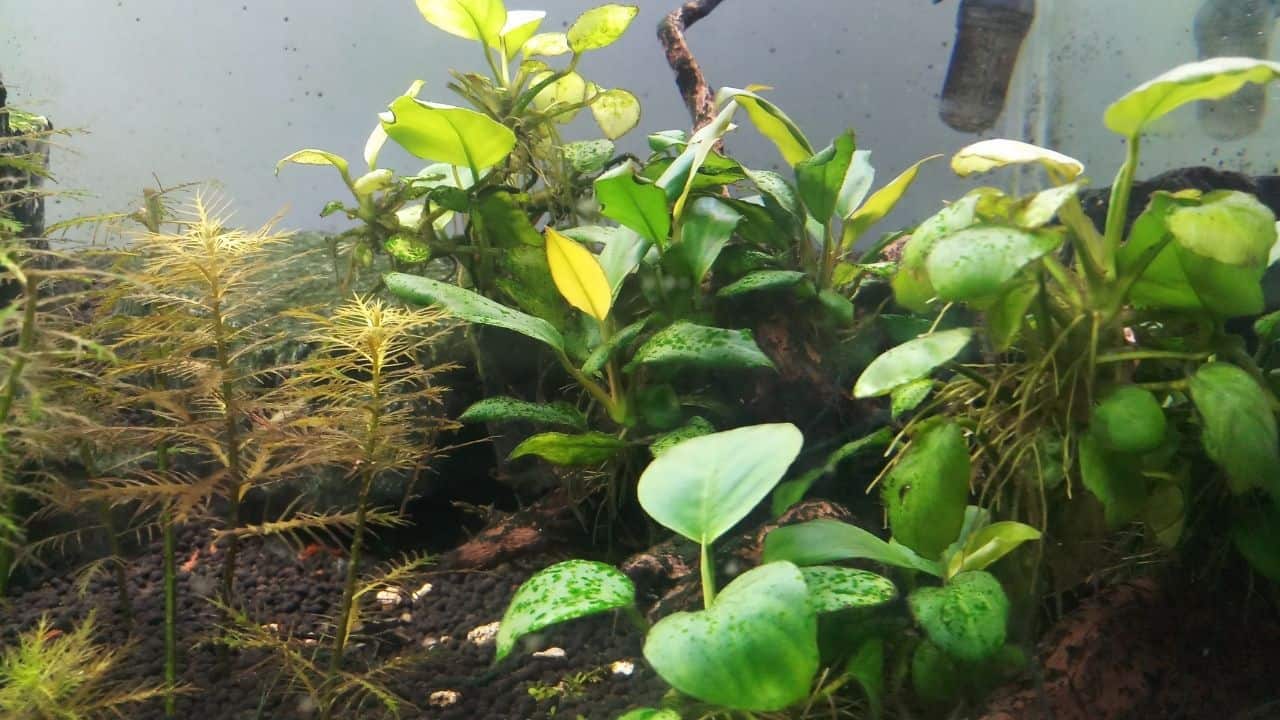
Another plant that provides great benefit to aquarium tanks with goldfish is the Anubias plant.
It is unique in terms of appearance. The binomial nomenclature and basic plant care requirements include:
- Origin: Araceae
- Level of care: Easy
- Requirement of light: light to medium
- Rate of growth: Very slow
- Requirements of Temperature: Between 72 to 82 degrees Fahrenheit (22-27 degrees Celsius)
- Required pH: Between 6.5 and 7.8
- Level of Hardness: Between 60 and 160 ppm
- Aquarium placement: in the middle or at the back of the tank
- The tank size: More than 11 inches
Anubias’ known to have several benefits like:
- It can survive with goldfish
- It can live in temperatures as little as 72 degrees Fahrenheit
- It does not need severe parameters of water
- It is quite undemanding
- Doesn’t require a substrate to live
The Anubias plant grows well under moderate light. Thus, you should make sure your plant receives around 1.5 or 3 Watts of light per gallon of water if fluorescent lights are being used.
If you make use of LED, keep the light levels between sixteen to fifty micromoles.
Anubias needs to be kept at the front of your aquarium tank as it is a short plant. It can also be tied to ornaments within your tanks, such as a rock or a piece of driftwood.
This plant can live a long life even without the use of fertilizers. But you can use fertilizers to increase the growth rate.
Pothos
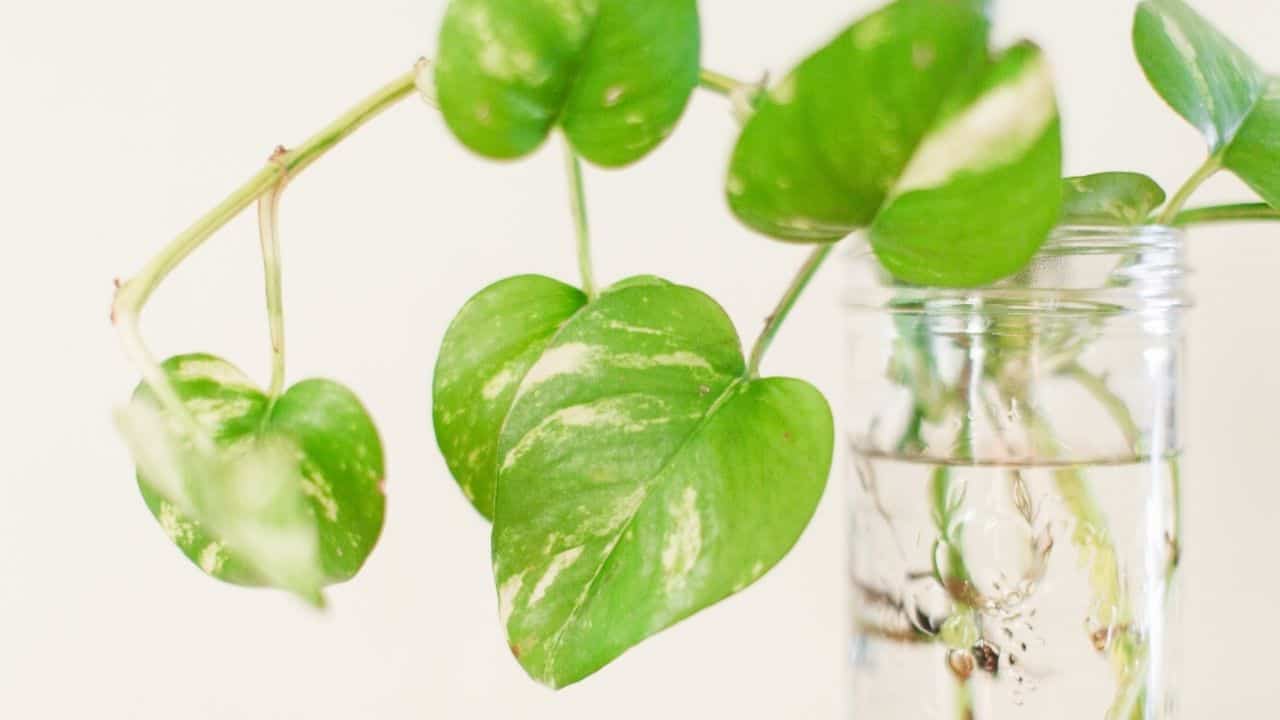
Another beautiful plant on this list is the Pothos plant. Its binomial nomenclature and basic plant care requirements include:
- Origin: From Araceae
- Level of care: Quite easy
- Requirement of light: little to bright
- Rate of growth: Quite fast
- Place in the aquarium: Can hang out of it
This is not a common aquarium plant amongst aquarium hobbyists.
But it offers certain advantages that make them the best plants for aquariums with goldfish, such as:
- Undemanding and a very hardy plant
- Survives in any dire situation
- The best plant to get rid of ammonia that accumulates in aquarium tanks.
- Very fast-growing plant.
Goldfish are very messy because they produce high levels of waste, and Pothos can help reduce those, including nitrate levels.
You also do not need to submerge your Pothos plant into the aquarium.
You can simply let the roots sink into the water and leave the top parts of your plant outside the tank.
Thus, your goldfish would not be able to find a way to consume your Pothos plant.
Water Lettuce
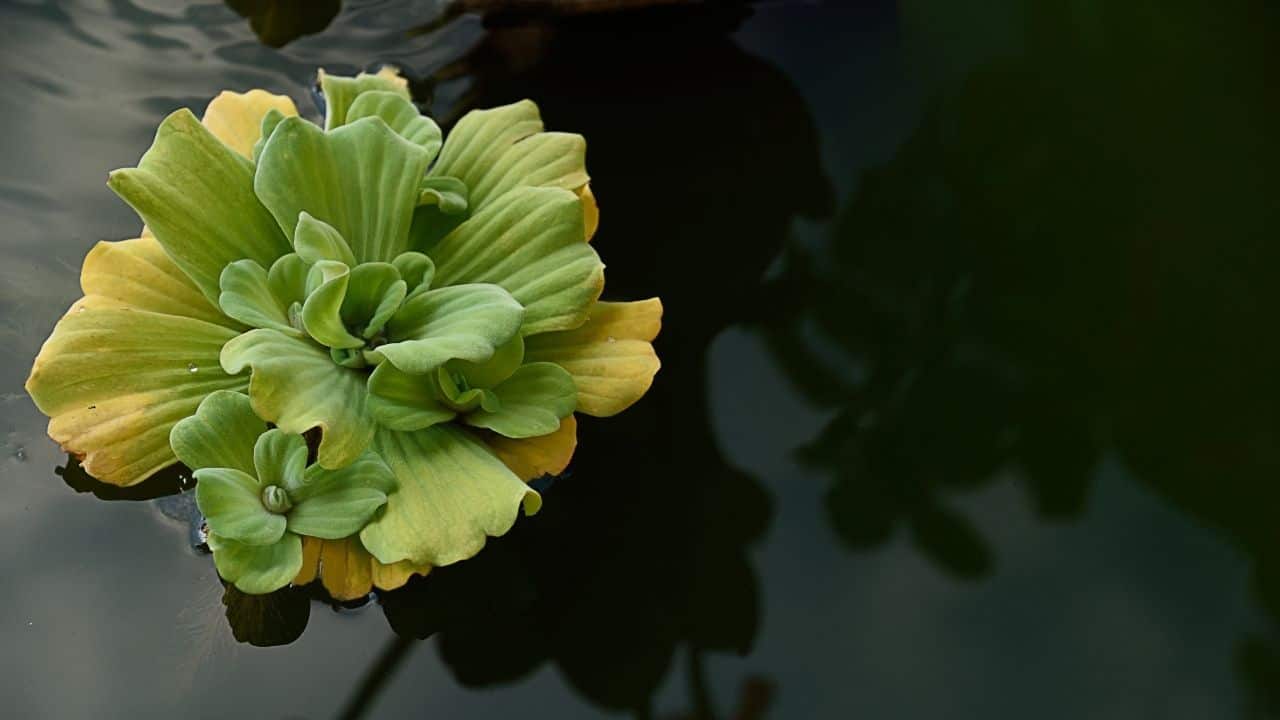
The final plant on this list includes the Water Lettuce plant.
Its binomial nomenclature and basic plant care requirements include:
- Origin: From Araceae family
- Level of care: Medium
- Requirement of light: Medium
- Rate of growth: Medium
- Requirement of temperature: Between 70 and 80 degrees Fahrenheit (21 to 26 degrees Fahrenheit)
- Required pH: Between 6.5 and 7.2
- Level of hardness: low to medium hard
- Placement in aquarium: at the surface
- The size of the tank: Around 10 gallons of water
This is an aquarium plant that floats, and it has many benefits such as:
- It is capable of tolerating temperatures as little as 70 degrees Fahrenheit
- It requires high humidity levels so it will survive well in aquariums
- It grows really fast in ideal conditions
Water Lettuce requires moderate lighting conditions. Thus, you should give it around thirty-five to fifty micromoles of LED lighting and two to three watts of fluorescent light.
This plant does not need any additional fertilization, and you should not provide extra fertilization either. Simply keep it under perfect lighting conditions, and your goldfishes will remain happy.
Factors to Consider While Choosing Plants for Goldfish Tanks
Consider various things when selecting plants for aquariums that have goldfish in them.
Some of these factors include:
- Temperature
- Humidity
- Placement
- Light
- Water conditions
Goldfishes are destructive and hungry throughout the day. So, there are 2 tips you can apply to ensure your aquarium thrives.
One is to plant a few goldfish-proof aquarium plants.
There are not many aquarium plants that goldfish will not consume, but there are some that they won’t nibble on as much, so you can plant those.
Less attractive leaf plants can also be grown to keep goldfish away from them.
The second thing you can do is to feed your goldfish various different things. You can make them snack on green vegetables like:
- Spinach
- Lettuce
- Kale
- Peas
- Cucumber slices
- Chard
Providing them with a diverse diet will help you keep them away from your aquarium plants.
Why Live Plants are Better than Fake Flora
When you start to decorate your aquarium tank with plants to help your fish survive, you will have the option to choose from fake and live plants.
Artificial plants are great since:
- They don’t need much attention, hence, are easy to maintain
- You can scrub them to remove algae or bacteria. Perform this once monthly.
- There’s no need to fret about good lighting as they will not die.
- There is a variety of fake plants that you can choose from.
- They are cheap
However, there are several drawbacks to them, like:
- They can look realistic, but they can never match up with real-life plants.
- They do not help clean and purify water.
- They do not oxygenate the water and clear out carbon dioxide.
- Your goldfish can’t nibble on them.
There’s no doubt that nothing can match up to live plants because they are a natural beauty.
While plastic plants are inexpensive, they are dangerous for your goldfish since they can prick them with their sharp edges.
Biologically speaking, live plants can provide a sea-like environment for the fish, and quite evidently, fake plants cannot do that.
Some advantages of having live plants include:
- Your plants will absorb nitrate and use it as a fertilizer
- In close aquariums, live plants are an important factor to think about as they will affect your water quality.
- They help produce oxygen and absorb carbon dioxide from the water.
- The lifespan of your goldfish will increase if there are live aquarium plants present.
- Live plants help mimic your goldfish’s natural environment.
- Live plants help remove toxins from water.
- They help reduce the chances of algae growth since they compete with them for nutrient intake.
While live plants are always the best choice to think about when it comes to your aquarium, they do have their own drawbacks as well, such as:
- Your goldfish will munch on the plants
- They require attention
- Lighting is an essential part of their growth
- Humidity levels need to be maintained
- Some plants thrive better with more fertilizer.
How to Stop Goldfishes from Eating Aquarium Plants
Goldfishes are extremely messy fishes as they cannot resist digging, pulling, nibbling, and snacking on plants.
Regardless of what type of plant you add to your aquarium, it is likely that your goldfish will end up digging them.
You will often find your plant being uprooted within no time. But this does not mean you need to become fearful and never place a single live plant in your aquarium.
You can add both live and fake plants to keep goldfish away from them and see which variety suits them the best.
Or you can simply follow these tips:
- Don’t choose exotic looking aquarium plants
- Choose plants having thick leaves
- Choose plants whose leaves resemble thorns
- Tie your plants to an ornament or a rock
- Attach some weighted objects to the plants so the goldfish can’t pull them out.
You can also stop your goldfishes from eating up your live plants by simply giving them a good diet. These fish love to consume loads of food.
Keep feeding them more often than before so they’ll leave your plants alone. You can also change up their diets every other day so that they would stop feeding on your aquarium plants.
Goldfish love eating the same vegetables as humans, so you can try to give them those. The key is to keep them busy with food so they do not look at the plants as something edible.
Of course, it is inevitable to stop some level of nibbling but it would prevent the greenery from completely disappearing.
Conclusion
These plants are the best option when it comes to aquarium plants for goldfish.
While you won’t find them completely intact at first due to the little nibbling creatures, your fish will stop wanting to consume your aquarium plants over time.
This only applies if you choose the plants mentioned in the above list.
Remember to keep your goldfishes distracted by continuously feeding them other plants or algae so they are not tempted to bite off of your plants and cause a mess within the aquarium.

